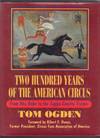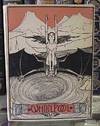
La photographie des couleurs in Comptes Rendus Hebdomadaires des Séances de l'Académie des Sciences, Vol. 112 No. 5, February 2, 1891, pp. 274-275
by Lippmann, Gabriel
- Used
- Hardcover
- first
- Condition
- See description
- Seller
-
West Branch, Iowa, United States
Payment Methods Accepted
About This Item
Paris: Gauthier-Villars, 1891. 1st Edition. FULL VOLUME, FIRST EDITION, OF LIPPMANN'S FIRST IN A SERIES OF SEMINAL PAPERS DESCRIBING HIS NOBEL PRIZE WINNING INVENTION OF "A METHOD OF REPRODUCING COLORS PHOTOGRAPHICALLY BASED ON THE PHENOMENON OF INTERFERENCE" Nobel Prize Committee). Lippmann's prize represents the only time this prestigious award has been given for a photographic invention.
Gabriel Jonas Lippmann was a French scientist and a professor of mathematical physics at the Sorbonne. In the paper offered here, Lippmann announced to the Academy of Sciences in Paris that he had succeeded in recording a true-color spectrum which was permanent. To do so, he employed the ‘interference principle' - a method based on silver chloride's optical reaction to light waves). Lippmann's technique, known as ‘interference photography' (also interferential photography or Lippmann photography), exploited the phenomenon of optical standing waves "by means of a mirror, and records these in a single-layer, panchromatic, ultra-fine grain, but black-and-white photographic emulsion" (Bjelkhagen, Lippmann Colour Photography, Alternative Photography).
Lippmann used an ordinary plate camera to form an image on the photographic plate. The plate, however, was "loaded backwards with the emulsion side placed away from the lens and in optical contact with a mirror of mercury. The incident light waves interfere with their own reflections forming a standing wave pattern within the volume of the emulsion, with a periodic spacing of /(2n) that has to be resolved and recorded ( is the wavelength of light in air and n is the refractive index of the emulsion). The colour information is stored locally in this way. The larger the separation between the fringes, the longer is the wavelength of the recorded light. When the developed photograph is viewed in white light, different parts of the recorded image produce different colours. This is due to the separation of the recorded fringes. In this way Lippmann's photographs reproduce all the monochromatic components registered on them. Since wavelength is relative to colour the spectra corresponding to the original scene can be reproduced with formidable accuracy, unlike any other colour photograph" (ibid).
Despite many difficulties with the process and the complexity of its use, Lippmann's methodology "remains, to this day, the only direct process of true colour photography known. It is a technique of exquisite beauty, both technically and aesthetically. The ultra- fine grain plates, essential to the medium, display the highest photographic resolution ever achieved. The encoding of colour, as a periodic volume diffraction grating of pure silver offers excellent and unrivaled archival longevity" (Bjelkhagen, Lippmann Colour Photography, Alternative Photography).
ALSO INCLUDED: "Variations de conductibilite des substances isolantes" (pp. 90-93) By Edouard Branly. In 1890 Branly invented the first widely used signal detector for radio communication, later called the ‘coherer'. (Note that we separately offer this paper in its original wraps). The paper included here, written just two months after his discovery, builds on the earlier paper and addresses the role of aerials (he did not use the term) in relation to the distance of transmission, together with the effect of a Faraday cage. The transmission distance was then on the order of 80 meters" (Dilhac, "Edouard Branly, the Coherer, and the Branly Effect," in IEEE Communications Magazine, September 2009, 20). CONDITION & DETAILS: Paris: Gauthier-Villars. 4 to. [10.5 x 8 inches]. Entire volume. Complete. Small library stamp on the rear of the title page slight ghosting at the spine from the removal of labels. Tightly and solidly bound in blue buckram. Bright and very clean inside and out. Near fine.
Gabriel Jonas Lippmann was a French scientist and a professor of mathematical physics at the Sorbonne. In the paper offered here, Lippmann announced to the Academy of Sciences in Paris that he had succeeded in recording a true-color spectrum which was permanent. To do so, he employed the ‘interference principle' - a method based on silver chloride's optical reaction to light waves). Lippmann's technique, known as ‘interference photography' (also interferential photography or Lippmann photography), exploited the phenomenon of optical standing waves "by means of a mirror, and records these in a single-layer, panchromatic, ultra-fine grain, but black-and-white photographic emulsion" (Bjelkhagen, Lippmann Colour Photography, Alternative Photography).
Lippmann used an ordinary plate camera to form an image on the photographic plate. The plate, however, was "loaded backwards with the emulsion side placed away from the lens and in optical contact with a mirror of mercury. The incident light waves interfere with their own reflections forming a standing wave pattern within the volume of the emulsion, with a periodic spacing of /(2n) that has to be resolved and recorded ( is the wavelength of light in air and n is the refractive index of the emulsion). The colour information is stored locally in this way. The larger the separation between the fringes, the longer is the wavelength of the recorded light. When the developed photograph is viewed in white light, different parts of the recorded image produce different colours. This is due to the separation of the recorded fringes. In this way Lippmann's photographs reproduce all the monochromatic components registered on them. Since wavelength is relative to colour the spectra corresponding to the original scene can be reproduced with formidable accuracy, unlike any other colour photograph" (ibid).
Despite many difficulties with the process and the complexity of its use, Lippmann's methodology "remains, to this day, the only direct process of true colour photography known. It is a technique of exquisite beauty, both technically and aesthetically. The ultra- fine grain plates, essential to the medium, display the highest photographic resolution ever achieved. The encoding of colour, as a periodic volume diffraction grating of pure silver offers excellent and unrivaled archival longevity" (Bjelkhagen, Lippmann Colour Photography, Alternative Photography).
ALSO INCLUDED: "Variations de conductibilite des substances isolantes" (pp. 90-93) By Edouard Branly. In 1890 Branly invented the first widely used signal detector for radio communication, later called the ‘coherer'. (Note that we separately offer this paper in its original wraps). The paper included here, written just two months after his discovery, builds on the earlier paper and addresses the role of aerials (he did not use the term) in relation to the distance of transmission, together with the effect of a Faraday cage. The transmission distance was then on the order of 80 meters" (Dilhac, "Edouard Branly, the Coherer, and the Branly Effect," in IEEE Communications Magazine, September 2009, 20). CONDITION & DETAILS: Paris: Gauthier-Villars. 4 to. [10.5 x 8 inches]. Entire volume. Complete. Small library stamp on the rear of the title page slight ghosting at the spine from the removal of labels. Tightly and solidly bound in blue buckram. Bright and very clean inside and out. Near fine.
Reviews
(Log in or Create an Account first!)
Details
- Bookseller
- Atticus Rare Books
(US)
- Bookseller's Inventory #
- 1036
- Title
- La photographie des couleurs in Comptes Rendus Hebdomadaires des Séances de l'Académie des Sciences, Vol. 112 No. 5, February 2, 1891, pp. 274-275
- Author
- Lippmann, Gabriel
- Book Condition
- Used
- Quantity Available
- 1
- Edition
- 1st Edition
- Binding
- Hardcover
- Publisher
- Gauthier-Villars
- Place of Publication
- Paris
- Date Published
- 1891
Terms of Sale
Atticus Rare Books
30 day return guarantee, with full refund including shipping costs for up to 30 days after delivery if an item arrives misdescribed or damaged.
About the Seller
Atticus Rare Books
Biblio member since 2010
West Branch, Iowa
About Atticus Rare Books
We specialize in rare and unusual antiquarian books in the sciences and the history of science. Additionally, we specialize in 20th century physics, mathematics, and astronomy.
Glossary
Some terminology that may be used in this description includes:
- First Edition
- In book collecting, the first edition is the earliest published form of a book. A book may have more than one first edition in...
- Title Page
- A page at the front of a book which may contain the title of the book, any subtitles, the authors, contributors, editors, the...
- Buckram
- A plain weave fabric normally made from cotton or linen which is stiffened with starch or other chemicals to cover the book...
- Fine
- A book in fine condition exhibits no flaws. A fine condition book closely approaches As New condition, but may lack the...
- Spine
- The outer portion of a book which covers the actual binding. The spine usually faces outward when a book is placed on a shelf....
- Plate
- Full page illustration or photograph. Plates are printed separately from the text of the book, and bound in at production. I.e.,...

